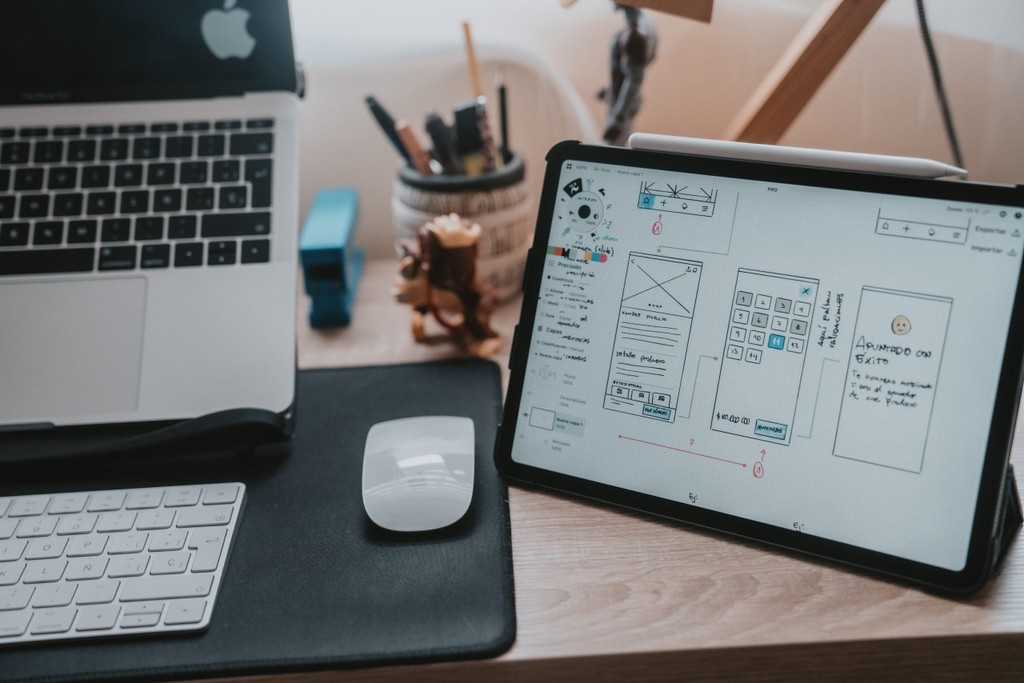Career and Life Lessons from 2 Years as a UX Researcher
15 March 2022
13 Mins Read
Dear Designer
Who is a Senior Designer?
In this episode of crunch talk, Aanu Sebiomo, Akin Theodox, Damilola Marcus, and Olalekan Akinyele unpack the context of being a senior designer, what makes a senior designer one, and the popular misconception surrounding it.
What makes a Senior Designer one?
The four designers echoed similar thoughts on the subjectiveness and vagueness of who a senior designer is.
Aanu gave his answer taking Nigeria into context. He believes the absence of a structured system of learning design makes it difficult to say what defines a senior designer, unlike the international community where there are universities where you can study and get a degree in design. According to him, if there was a learning structure for design, the hierarchy could be measured by how long one has earned a degree. He defined a senior designer as someone who has a couple of quality years of experience, who doesn’t just design screens, but knows how to effectively combine form and function.
From Theodox’s presidential perspective, confidence, work output, and people management are three important things that qualify anyone to be a senior designer. Spearheading design decisions confidently, managing people, and taking the role of “top person” on a project from start to finish. Interestingly, he believes that all of these points are relatively reliant on your years of experience as the aforementioned points are things that take years to become good at.
Damilola believes that there are three things to look at when you’re trying to define who a senior designer is. First, time could be a defining factor for some people, with the idea that the longer you spend in the design space, the closer you get to attaining the “senior designer” position. To other people, however, it is more of a measure of skill and what you’re able to do as a designer. And lastly, some designers may feel that a managerial appointment or agency standpoint is what makes them senior designers.
To Lexain, what makes a senior designer one is not about the years of experience they have, but is largely dependent on environments in which they work, who they work with, who they learn from, the kind of projects that they embark on, and the kind of projects they work on. “Someone that has been working as a designer for 10 years in an environment like Shomolu cannot be compared with someone that has been working as a designer for 10 years in an advertising agency,” he said.
What are the responsibilities of a senior designer?
It’s not much of a coincidence that the designers mentioned the Leadership role as a distinct responsibility of a senior designer. They believe the key responsibility of a senior designer is the ability to assume a leadership role, manage people efficiently, and have a strong understanding of the design works and their details. They also mentioned other various roles of a senior designer.
In Aanu’s opinion, a senior designer’s responsibility is paying attention to little detail. They know how to align design business values. They help achieve financial business goals. They help proffer solutions to people’s marketing problems. They look at functionality, business goals, and the visual part of things and get the team to make the final decisions.
Damilola adds that a senior designer’s responsibility varies from organization to organization but she agrees that there are commonalities in terms of what the expectations are for a senior designer. According to her, a senior designer is “someone who can take genuine ownership of a project”. This person has moved from trying to figure out the fundamentals of design to exploring, expanding, and experimenting in a very meaningful and impactful way.
Theodox opines that a senior designer manages people, makes confident decisions while working on projects, and spearheads design tasks that consist of a team of people. They are people who create frameworks that help a project succeed and put people on tasks.
Lexain asserts that senior designers should have the skill set to start a project from conception and ensure that the entire project is complete and deliverables are met.
“Senior designers create original works. They review the works of their subordinates and the people working on them. They know how to use different graphic software. They know how to apply typography techniques, manage and combine fonts. They know how to create fantastically and adhere to all the principles of design.”
– Olalekan Akinyele
A senior designer thinks functionality first, then aesthetics later.“If you are creating a product, you should know that the product is meant to solve a problem whether it is digital products, a software product, or a hardware product, it must solve a problem.” He concludes.
What’s the importance of the number of years in making a senior designer?
Damilola holds that people have different opinions as regards this. The number of years could be an important factor for some people because it’s a simple way to gauge. They believe doing one thing for many years makes one adept in it. She, however, doesn’t share that notion. She looks out for someone who has an excellent grasp of rudimentary design principles and has adequately explored that and also brings unique perspectives into that thing with strengthened meaningfulness.
“There are certain environments in Nigeria that do not allow people to truly flourish as designers. You may spend several years in those kinds of organizations or environments and not have gained much. So, that for me is the least important thing”, she says.
Aanu states that not having a structured learning environment makes it difficult to determine if years of experience are important in determining who a senior designer is.
He mentioned that no written rule suggests a senior designer must have a certain number of years of experience. “Who do we say the senior designer is? How do we measure the quantity of experience one has? Is it quality years of experience? Have they been exposed to the right things? Did they work with teams? Did they work with businesses and help them achieve their goals? These are the questions to put into consideration. Although the number of years is important, the quality of the experience is more important.” he concluded.
Lexain also added his fresh perspective. To him, the years of experience don’t matter. It’s all about the growth mindset of an individual. Using his career story as a case study, he started his career in 2011 professionally as a graphic designer and was open to learning. He talked about how he wanted to learn everything and the number of tutorials he watched just to stay on top of his game and in one year, he was promoted to the senior art director role.
He mentioned that one thing he noticed helped him grow over the years is that willingness to learn, that growth mindset to always want to do something new. The environment also contributed to his growth as he had competitive colleagues.
“A designer might have spent several years in a certain organization and they probably didn’t grow that much. It boils down to the task they are willing to take, how they are taking ownership of projects, how they’re managing the process itself, the end-to-end process from the conception to the completion of the project. So, I think those are key as against just watching out for how many years this person has spent.”
Theodox’s opinion is a bit different from the others because he believes it is important to have a certain number of years of experience working fully as a designer before you can call yourself a senior designer. These years of experience are to gather the necessary set skills one should have as a senior designer and these skills are not learned overnight. However, implementing and putting them into effective use is what makes you a senior designer.
How many you know, designers have you met?
Given a range, all four designers have met only a few designers. By Aanu’s definition of who he thinks a senior designer is, he has only met with a very few of them. Theodox has met three designers physically and seven of them online.
Damilola thinks there are not many senior designers in Nigeria, especially in her niche which is brand identity. However, she has met a few in product design. Over the course of his career, Lexian has met a few in every agency he has worked with. In about a decade, he has met five designers.
What are the popular misconceptions of who a senior designer is?
One of the popular misconceptions Theodox mentioned is how people sometimes think being a senior designer at one company automatically translates into you becoming a senior designer at another company. It doesn’t make you a senior designer even in the normal freelance world. So while you are a senior designer in a company, you might be a junior designer in another company. He paints the scenario of working in a local company as a senior designer and you go to an international company like Google, you might just be an intern there.
Another misconception worthy of note by Damilola is the fact that people measure being a senior designer by the number of their years of experience. She also mentioned how people assume they are senior designers once they have worked with big names. It could mean that they’ve acquired one of the necessary aspects of being a senior designer. That’s the way Damilola looks at it as opposed to working with big names or being in the industry for a long time.
To Lexain, one of the misconceptions that we have sometimes is that we think that most people that call themselves senior designers could deliver on what we expect them to deliver. Sometimes, you could be disappointed with what you get.
Are any other things worthy of note on the subject matter?
Lexain gave insight on how designers need to start looking beyond just executing ideas and doing eye-candy visuals that might not solve any problem. Designers should be interested in looking at how to solve problems, how to take charge of projects, and how to let their voices be heard in terms of having strong opinions. Their opinions should come from a place of depth in terms of the amount of research that they’ve done, the knowledge they have on the subject matter, and how much creative juice they have.
Designers need to pay attention more to the way things work, not the way things look so that they can be able to improve on their work so you can equally improve people’s lives, their standard of living, and the quality of their lives eventually.
Damilola mentioned genuine autonomy to work is important because you can have a well-rounded view of design. You’re able to stretch the boundaries of it, you’re able to execute as execution is a strength of a senior designer.
“Execution, articulation, both verbal and visual, ability to lead to the quality of the work, a strong grasp on excellence, grasp of rudimentary knowledge, a groundedness on what the industry trend is, knowing when to follow it or when to leave it, having a network, having a reputation, clients relations, mastering skills as opposed to starting to learn them, reliability and dependability, ability to take ownership of not just parts of the project but the entire project to truly lead it with your understanding know-how and the value of your design techniques are what makes you a senior designer,” she concluded.
Theodox concluded that senior designers are responsibility takers. They are people who put people at the core of their decisions. They are people who create frameworks that help a project succeed. They know what should not be and are unwavering about it. Years of experience and the diversity of what they’ve worked on have helped them gain a lot of clarity on a lot of topics and a lot of discussions. A senior designer is not someone who just has years of experience as a designer, nor is someone who was appointed by a company as a senior designer. He is someone who can perform all these qualities or fits into all these qualities.
Aanu advocated for a structured learning system. “We need to have schools where people can learn design, graduate, have years of experience, and do internships. These would differentiate them from someone who’s just coming into the school of design, or an intern,” he said.
If a structure is absent, it might be very difficult, especially here in Nigeria to distinguish between a junior and senior designer. He recommended that we push towards having the standard curriculum so that in the n coming years, we would have structured education for designers.
Other Posts
So You Are a Senior Designer?
Design Nudge: An Approach to Creating Human-Centered Designs.



